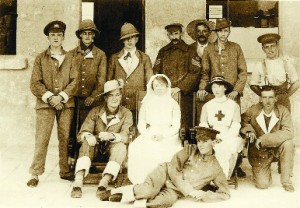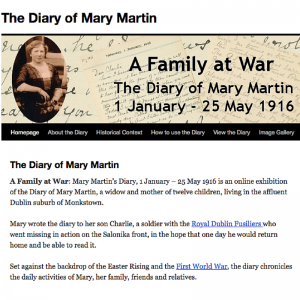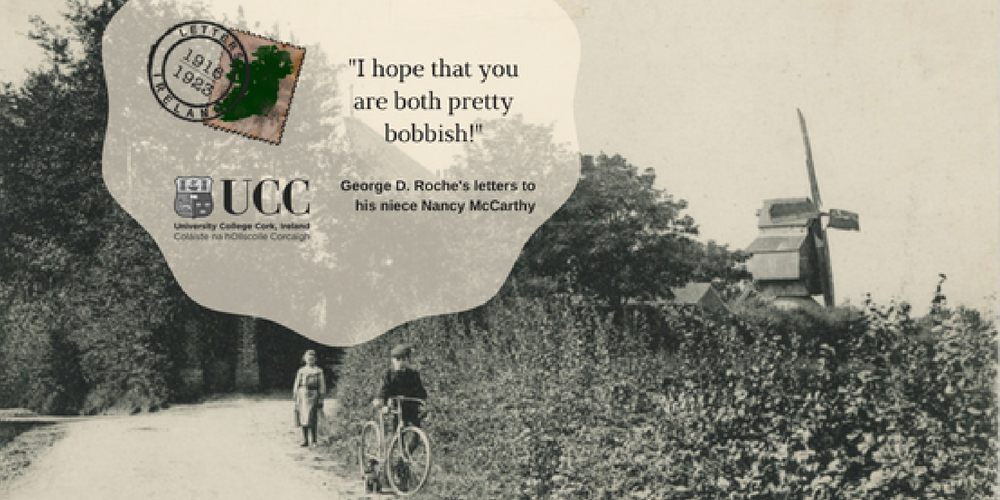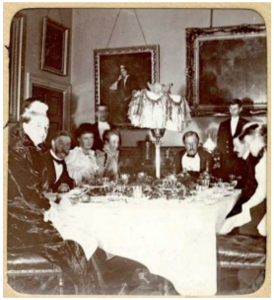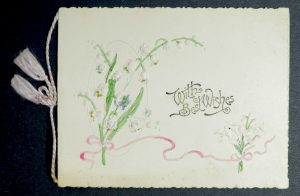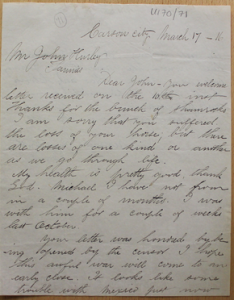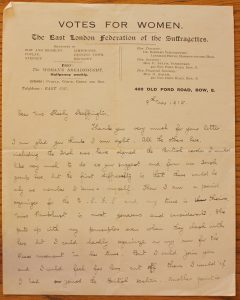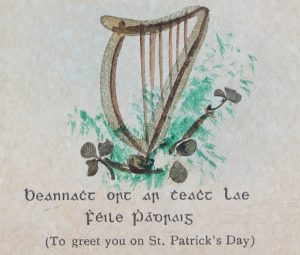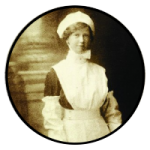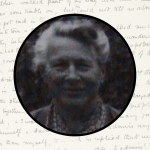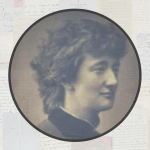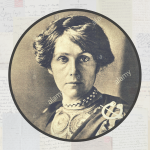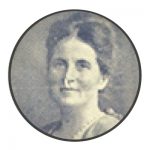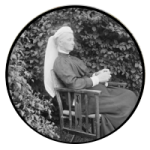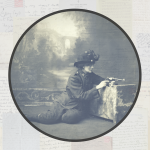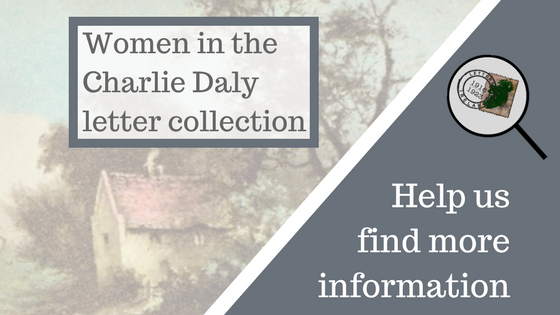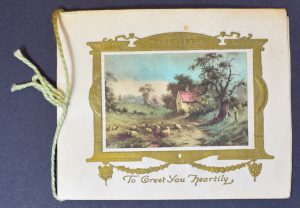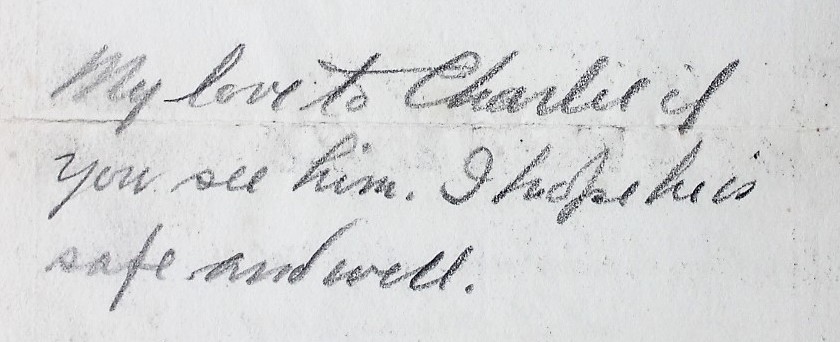The Letters 1916-1923 collection includes material from all parts of Ireland, and thanks to generous contributions from the Kerry County Archive, the west of Ireland is now one of the most prominent regions in our database. Alongside individual letters highlighting the living conditions in Kerry and the impact of the Easter Rising and the First World War on one of the poorer counties in Ireland, we have been able to digitize letters from the extensive Thomas Ashe and Charlie Daly collections.
The Thomas Ashe Collection
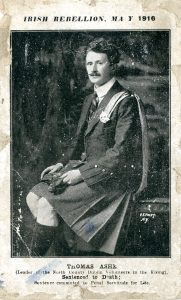 The letters of Irish Republican Thomas Ashe in this collection are written in both Irish and English. Thomas Ashe was born in Kinard, Dingle, County Kerry in January 1885. He died while on hunger strike in Mountjoy Prison on 25th September 1917. The collection includes letters written to his father, Gregory Ashe and his sister Nora Ashe. There are also letters written in Irish, such as Ashe’s correspondence with Riobard Ó Langphuirt.
The letters of Irish Republican Thomas Ashe in this collection are written in both Irish and English. Thomas Ashe was born in Kinard, Dingle, County Kerry in January 1885. He died while on hunger strike in Mountjoy Prison on 25th September 1917. The collection includes letters written to his father, Gregory Ashe and his sister Nora Ashe. There are also letters written in Irish, such as Ashe’s correspondence with Riobard Ó Langphuirt.Letters from and to Austin Stack
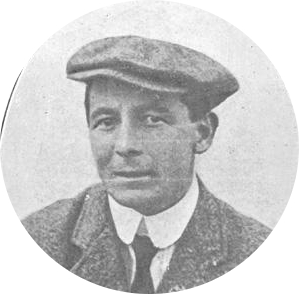 Another prominent letter-writer from Co Kerry is Austin Stack, an Irish revolutionary and politician. Stack was commandant of the Kerry Brigade of the Irish Volunteers and made preparations to receive Roger Casement upon his return to Ireland. Stack was sentenced to death for his part in the Easter Rising, but this sentence was later commuted to penal servitude for life. He was released in 1917.
Another prominent letter-writer from Co Kerry is Austin Stack, an Irish revolutionary and politician. Stack was commandant of the Kerry Brigade of the Irish Volunteers and made preparations to receive Roger Casement upon his return to Ireland. Stack was sentenced to death for his part in the Easter Rising, but this sentence was later commuted to penal servitude for life. He was released in 1917.The Charlie Daly Collection
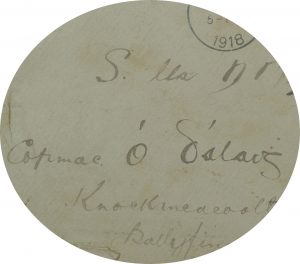 The letters in the Charlie Daly collection concern Irish republican Charlie Daly, who was born in Knockaneculteen, Firies, Kerry, on 11 August 1896, and famously rejected the peace treaty with Britain. Daly was subsequently captured and imprisoned at Drumboe Castle in County Donegal, where he was executed by firing squad on 14 March 1923 along with three other men: Dan Enright, Tim O’Sullivan, and Seán Larkin. The letters in the Charlie Daly collection are kept at the Kerry County Archive and were mostly written between 1918 and April 1923. Charlie Daly wrote to his large family and numerous male and female friends. Approximately 70% of all correspondents in the collection are women whose life stories are hardly known.
The letters in the Charlie Daly collection concern Irish republican Charlie Daly, who was born in Knockaneculteen, Firies, Kerry, on 11 August 1896, and famously rejected the peace treaty with Britain. Daly was subsequently captured and imprisoned at Drumboe Castle in County Donegal, where he was executed by firing squad on 14 March 1923 along with three other men: Dan Enright, Tim O’Sullivan, and Seán Larkin. The letters in the Charlie Daly collection are kept at the Kerry County Archive and were mostly written between 1918 and April 1923. Charlie Daly wrote to his large family and numerous male and female friends. Approximately 70% of all correspondents in the collection are women whose life stories are hardly known.For further information about Co Kerry in the early twentieth century and republican groups in Western Ireland, you may want to consult the research article Poverty and War: County Kerry and the letters from 1916.
We also recommend the following book for further reading:
Joy, Sinéad. The IRA in Kerry, 1916-1921. Collins, Cork, 2005. 382-385.
Horgan, Tim. Dying for the cause: Kerry’s Republican Dead. Mercier Press, Cork, 2015. 377-381.”
